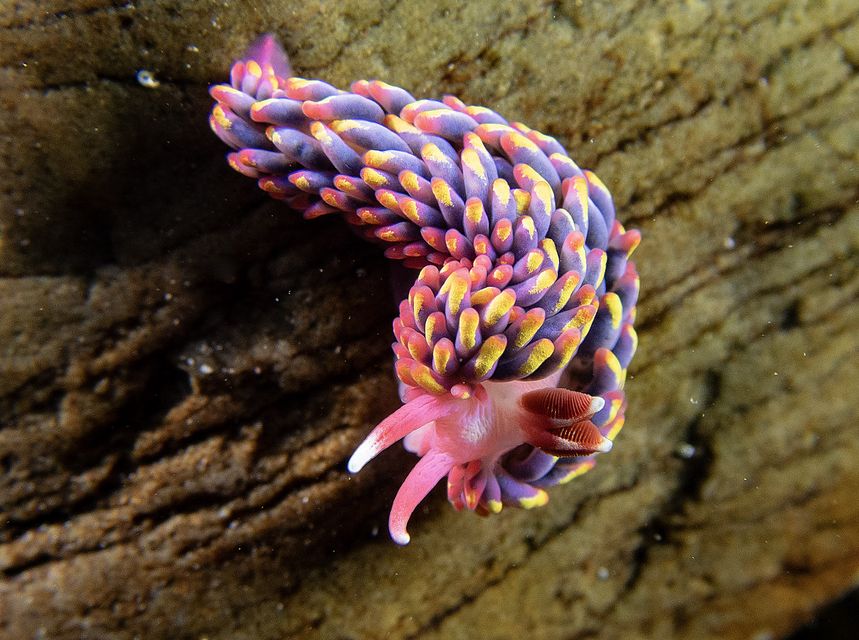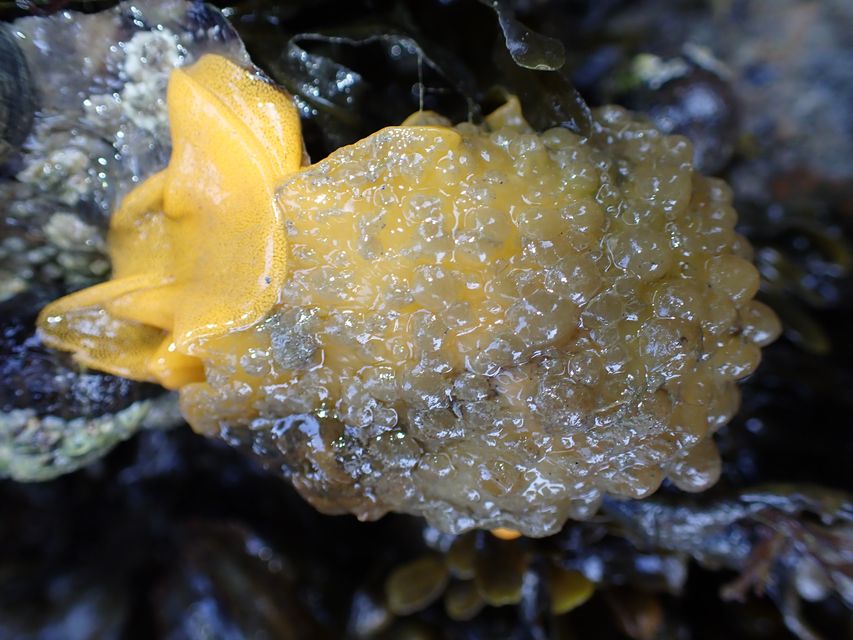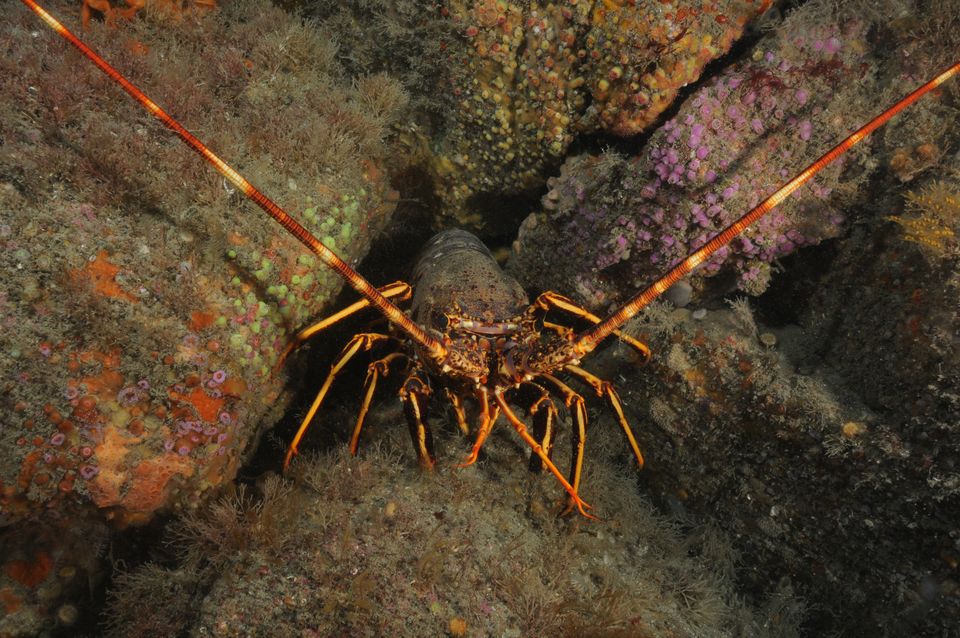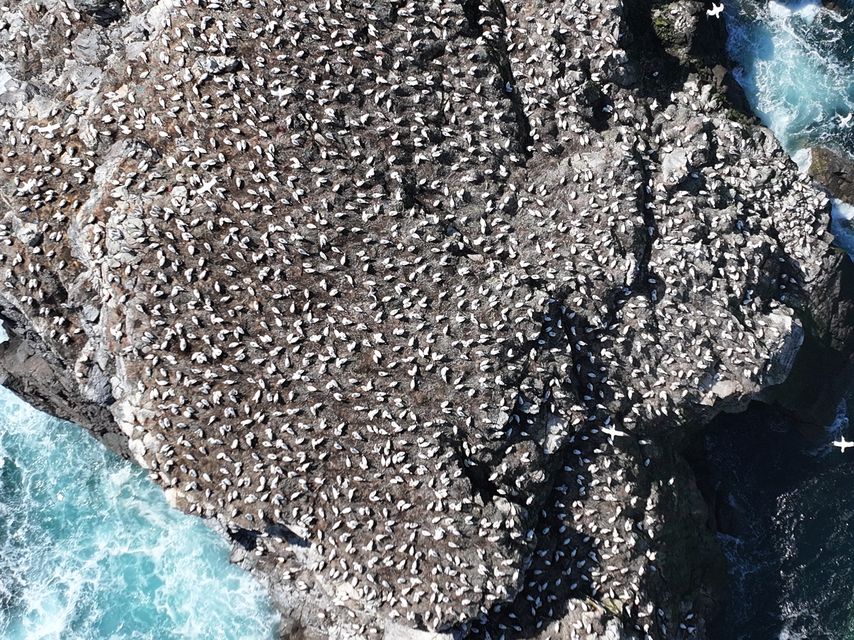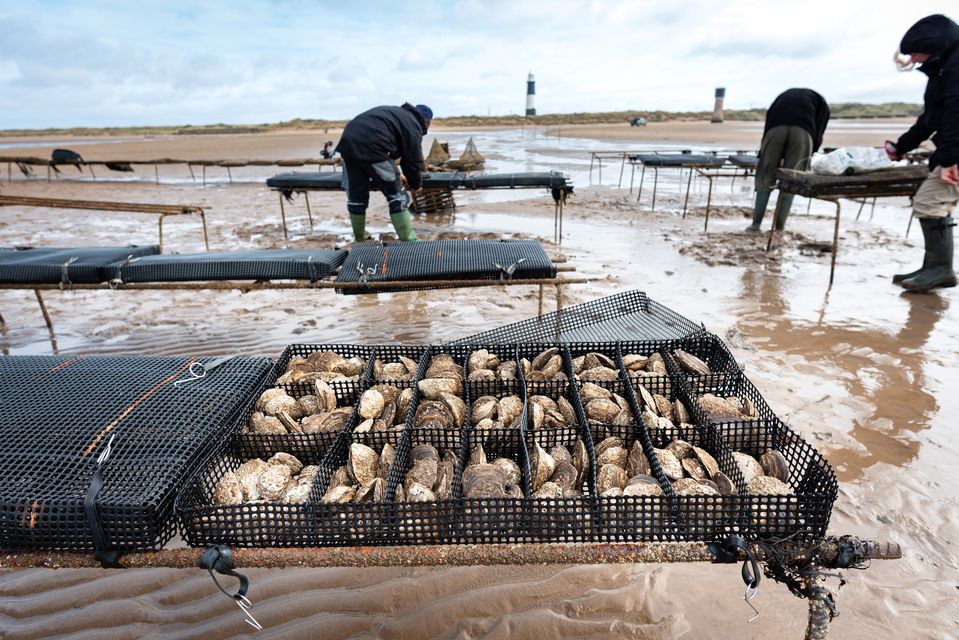Sea slugs making a home in the UK due to climate change are among the species spotted around the country’s coasts in 2024, The Wildlife Trusts said.
Sea monitoring by volunteers and conservationists this year also revealed invasive species such as Pacific oysters and showed some wildlife making a comeback, including St Piran’s hermit crabs along the south coast – which were wiped out by the Torrey Canyon oil spill of 1967.
The Wildlife Trusts annual marine review for 2024 highlighted conservation projects to reconnect land and ocean habitats and restore native oyster beds and a network of snorkelling trails to bring people closer to nature in Scotland’s seas.
A rainbow sea slug in a Wembury rock pool (Paul Naylor/PA)
The Trusts said volunteers clocked more than 46,000 hours of surveys and beach cleans in 2024, with numerous wildlife discoveries made during a national survey programme of shorelines and estuaries, Shoresearch, and volunteering days.
The UK became the first country in 2024 to map its “blue carbon” – the carbon stored in seabed mud and coastal habitats such as saltmarshes – thanks to a project by a number of charities, including the Wildlife Trusts.
The Wildlife Trusts is calling for better protection of the UK’s seas, such as banning destructive “bottom trawling” fishing practices, which damage and destroy carbon and nature-rich seabed habitats.
Monitoring of marine habitats highlights that species recover when properly protected, the trusts said, such as the discovery of a spiny lobster in Wembury Bay for the first time in “living memory” following excessive fishing in the 1960s and 1970s.
In Sussex – three years after a byelaw protected more than 100 square miles of seabed from trawling – giant mussel beds, more lobsters, a tope shark and European eel were among 81 species recorded.
Huge numbers of juvenile bass were found in Medway in the UK’s largest no-take zone.
A warty Doris sea slug in Sussex (Sussex Wildlife Trust/PA)
Species recorded on the UK’s coasts in 2024 included “climate indicators” such as the first record of a rainbow sea slug in Devon, found by a school student on a family day trip to Wembury Beach, and the first record of a warty Doris sea slug in Chichester Harbour, Sussex.
Both sea slugs are normally found in warmer waters and have only been recorded in UK waters in the past couple of years, suggesting they are moving due to climate change.
Hundreds of mauve jellyfish, normally found in warmer waters such as the Mediterranean, washed up in Cornwall and on the Isles of Scilly – possibly due to weather conditions.
A spiny lobster was found in Wembury Bay for the first time in ‘living memory’ (Keith Hiscock/PA)
A loggerhead turtle – a species which is at home in warmer waters but occasionally turns up in the UK’s seas – was found in Cumbria and released in the Azores.
Monitoring also uncovered non-native species that could affect British wildlife, including pom-pom weed, an Asian-native seaweed that could displace barnacles, in Devon and Asian shore crab on the Naze in Essex that could outcompete the native species for food.
A very dense collection of invasive Pacific oysters, which can alter ecosystems and displace native oysters, was logged at Hope Cove in Devon.
Among other notable wildlife sightings in UK waters were 30 humpback whales recorded off Cornwall last winter, including “Ivy” who was freed from entanglement by lifeboat crews, and a rarely seen “sea mouse” worm, normally found on the seabed, moving through the sands at high tide.
Gannets have been surveyed on Alderney in the English Channel with drones (Seabird Watch/PA)
In Dorset, a black bream caught at Poole Bay contained 38 seahorses – which have few predators as they are well camouflaged – in a case that baffled experts.
Numerous shallow pits were discovered in the Lyme Bay seabed, with investigations confirming the presence of porpoises thought to be foraging for sand eels.
Marine conservation projects ranged from Cornwall Wildlife Trust’s “tor to shore” project to join conservation on land with protecting seagrasses and maerl seaweed beds in St Austell Bay, to schemes restoring native oysters in the Humber estuary and in Essex.
Alderney’s northern gannets, which make up 1% of the global population, became one of the first in the world to be surveyed using drones and AI.
And Scottish Wildlife Trust completed its snorkel trail network with two final routes in Orkney, meaning there are now 13 trails to help snorkelling wildlife-lovers explore Scotland’s seas.
Conservationists work on the Wilder Humber oyster restoration project (Finn Varney/PA)
Ruth Williams, head of marine conservation at The Wildlife Trusts, said: “People are central to nature recovery and made huge contributions to our knowledge of UK seas this year.
“Wildlife surveys and monitoring have led to incredible discoveries, including new species on UK shores.
“Success stories demonstrate the enormous value of marine conservation and why robust protection is critical for nature recovery.”
She said the seas were also the “unsung heroes in our fight against climate change” and urged: “We need policies that stop damaging activities in protected areas, plus continued support for innovation, monitoring and work to improve coastal habitats.”
